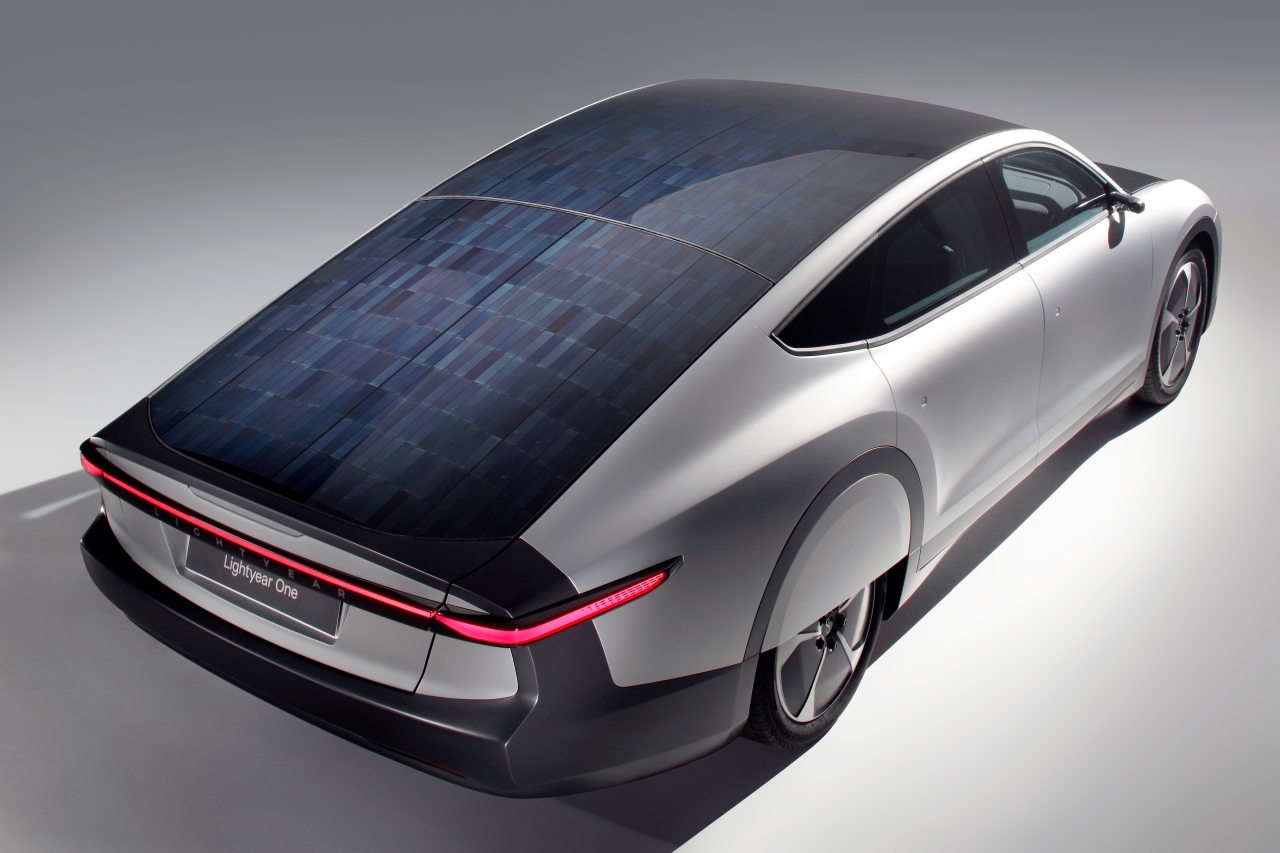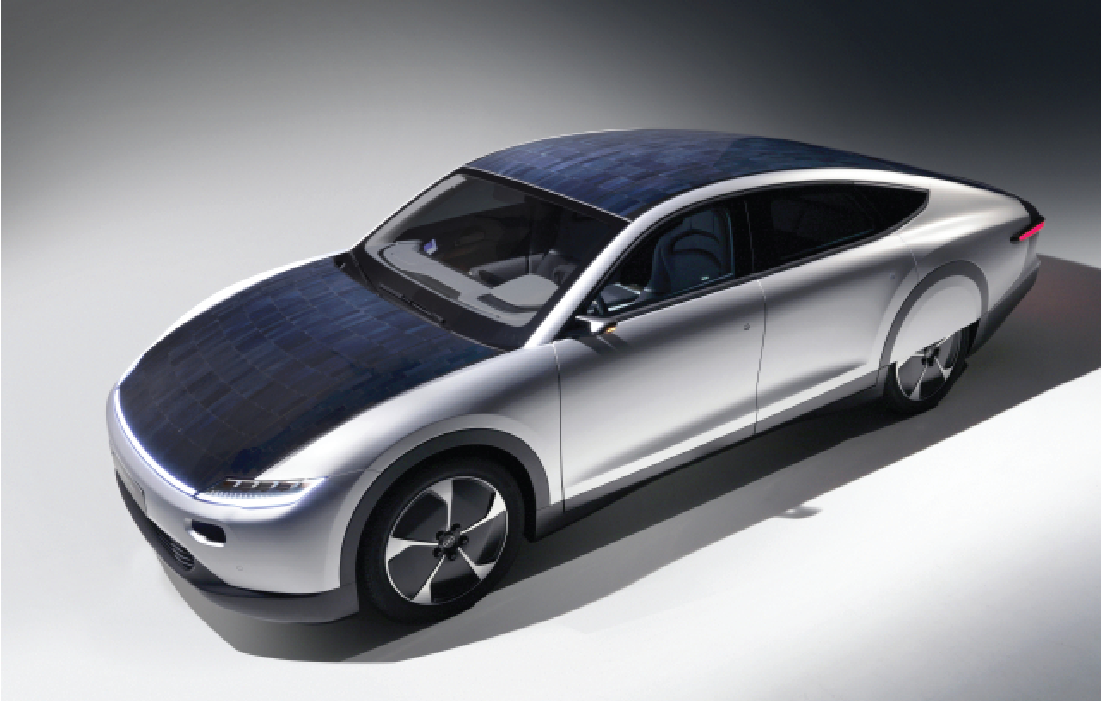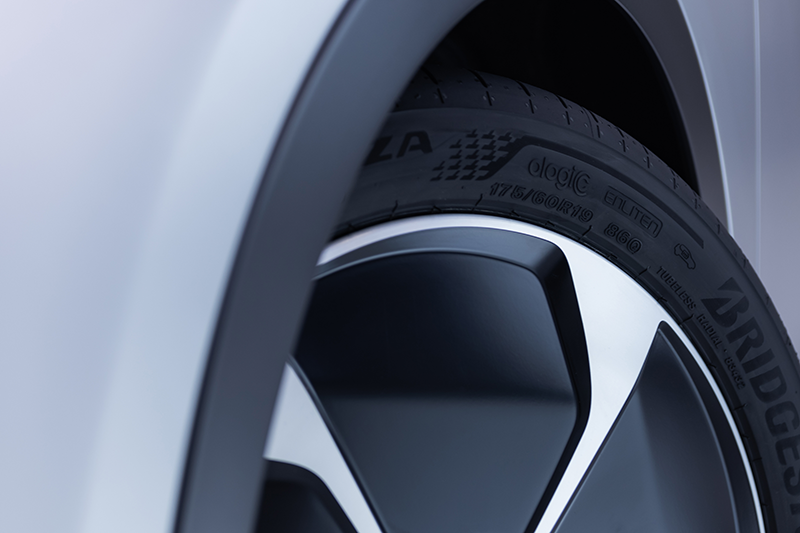
Bridgestone applied its lightweight and environmentally-friendly ENLITEN technology on Turanza Eco tyres specially engineered for Lightyear One, providing significant efficiency contribution in order to maintain battery life, maximise vehicle range, and reduce environmental impact.
● ENLITEN technology enables tyres to have a super low rolling resistance while requiring less raw materials to be used, providing significant efficiency contribution in order to maintain battery life, maximise vehicle range, and reduce environmental impact
● Partnership between Lightyear and Bridgestone is a direct result of shared focus on sustainability and builds upon work together for the Bridgestone World Solar Challenge
● Lightyear One will hit test tracks in Q2 2021 and be commercially available by the end of Q4

Building on 90 years of expertise, Bridgestone, a global leader in advanced solutions and sustainable mobility, has announced an exclusive partnership with Netherlands-based mobility innovator Lightyear. Bridgestone has engineered tyres specifically for Lightyear One, the world’s first long-range solar electric vehicle, which is set for commercial availability by the end of this year.
Recent research1 from Bridgestone has shown that 50 percent of European drivers consider acquiring a fully electric vehicle, and yet 37 per cent are still skeptical about doing so due to concerns around efficiency and limited range.
Lightyear One addresses these concerns head on by offering an unprecedented range of 725km, while being up to three times more energy-efficient versus alternative electric vehicles currently on the market. The vehicle is charged directly by the sun through a large solar roof, minimising CO2 emissions and the charging needs of the user while maximising efficiency.
To achieve such incredible performance, Lightyear has pushed the boundaries of current technology, designing a vehicle that boasts the best aerodynamic coefficient of any production car to date through substantial gains in many different areas of vehicle design. To support this unique performance and further improve on efficiency, Lightyear sought a tyre that offered very low rolling resistance and weight reduction, in order to preserve battery life, maximise vehicle range, and reduce environmental impact.

Bridgestone developed custom-engineered Turanza Eco tyres for Lightyear One, combining its revolutionary lightweight ENLITEN and ologic technologies for the very first time. The technologies reduce weight through the use of fewer raw materials throughout the manufacturing process, while cutting rolling resistance through innovative tread, larger diameters, high inflation pressures and slim design.
The very low rolling resistance of the tyres also means Lightyear One can benefit from a lighter battery. As a result, the Turanza Eco tyres are designed to boost range when compared to alternative Bridgestone EV-specific tyres, equivalent to more than a 90kg reduction in weight2. In addition to helping Lightyear One to travel further between charges, the tyre’s silica dispersion has been improved by applying a new mixing technology, there is a 3.6kg (around 10%) overall reduction in the tyre’s weight per vehicle3, without any compromise on wear mileage4 and grip.
For the first time, the Turanza Eco tyres will bear the new Bridgestone EV Marking on the sidewalls. The Bridgestone EV Marking is applied to tyres that are tailor-made for electric vehicles and indicates the tyres underwent a rigorous testing process to receive approval from car manufacturers. As a result, these tyres support the unique features of electric vehicles and meet the car manufacturer requirements for battery range, vehicle control and tyre wear life.
Bridgestone also utilised its Virtual Tyre Development technology which enables accurate modelling of a tyre’s performance without having to physically produce and test it, saving up to 40,000 kilometres in real-life outdoor and fleet testing. It can also cut product development time by up to 50 per cent5.
The foundation for Lightyear One was laid during the Bridgestone World Solar Challenge, a 3,000km race across the Australian Outback that pushes the limits of technological innovation and solar-powered mobility. With this in mind, Bridgestone has been collaborating with Eindhoven Technical University and the people behind Lightyear for eight years. Solar Team Eindhoven, the birth ground of Lightyear, won the Bridgestone World Solar Challenge’s Cruiser Cup four consecutive times, from 2016-2019.
Emilio Tiberio, COO & CTO of Bridgestone EMIA, explains: “Lightyear have impressed with their approach to sustainable mobility ever since we saw the team take on the Bridgestone World Solar Challenge, and so we’re excited to play a part in the Lightyear One project. Bridgestone is committed to a 50% reduction in CO2 emissions by 2030 and 100% sustainable materials by 2050 and strategic partnerships are fundamental to achieving these goals.”
Lex Hoefsloot, CEO of Lightyear, adds: “We’re particularly happy to see this collaboration between Bridgestone and Lightyear, with two companies that share a vision for future sustainable mobility coming together. The world is already experiencing unprecedented change and challenges, and through innovation and cutting-edge technologies we can work together to grasp the opportunities head on and create a more sustainable world.”
- - -
About Lightyear
Lightyear is on a mission to make clean mobility available to everyone, everywhere. Lightyear develops electric cars with an energy-efficient design and integrated solar cells. This allows motorists, depending on the climate, to drive up to twenty thousand kilometres per year on the power of the sun. The fast-growing company was founded in 2016 and currently employs more than one hundred forty employees. The team is made up out of a mix of young talent and experience from the automotive industry, including former employees of Tesla, Audi, McLaren and Ferrari. In 2019, Lightyear received the Horizon 2020 grant from the European Commission under grant agreement number 848620. In the summer of 2019, Lightyear launched its first driving prototype, Lightyear One, and opened a new office. The prestigious TIME Magazine acknowledged Lightyear One as one of the ‘100 best inventions’ of 2019. The first deliveries are expected at the end of 2021, with production of the exclusive series of 946 cars ramping up in 2022.
1 Study of 3,000 consumers across European markets. Carried out by Bridgestone via Profacts Brand Tracker in January 2021
2 Energy consumption comparison between Lightyear One tyre and existing Bridgestone regular production tyre 175/60 R19
3 Weight of LY One tyre versus existing BS regular production tyre in same size (175/60 R19)
4 Wear test was conducted between LY One tyre and existing BS regular production tyre in same size (175/60 R19)
5 Virtual development can minimise or avoid altogether the outdoor testing (40,000 km) a combination of real world fleet test and outdoor testing based on a 4 loop development. 40,000 km is an average of the current PSR development testing procedure carried out by TCE (outdoor and fleet)